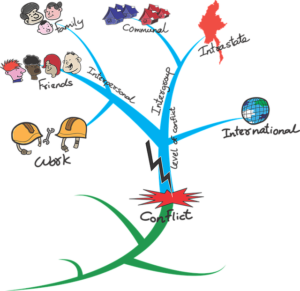Classroom teaching tends to be structured around syllabi, learning objectives and measurable results. But what if we shifted the focus from these to…learning itself? Rachael Harris explains why and how to teach our students how to learn instead of grammar and vocabulary.
In a world where AI is changing our landscape and future daily, where we hear that over 90 % of present jobs will disappear, what are we supposed to teach our students? Is there any point teaching vocabulary when we have Google Translate?
This famous quote by sociologist Alvin Toffler says it all for me:
The illiterate of the 21st century will not be those who cannot read and write, but those who cannot learn, unlearn, and relearn.
For example, have you noticed that some students just “get” everything after one quick explanation? They immediately see what needs to be done and get it finished before some have even started. (They’re often the ones that will remember there’s a list of useful words to help easily complete the exercise you’ve just given in the coursebook!)
What if, in fact, these students were simply using learning strategies?
In any case, I believe that teaching our students to effectively use learning strategies is essentially giving them all a key to successful future learning, especially those who are finding it more challenging.
So what do we mean by learning strategies?
There have been hundreds of definitions and taxonomies by the greats in the field, including Rebecca Oxford, Ernesto Macaro, Andrew D. Cohen, Anna Uhl Chamot, etc.
To resume all that simply, learning strategies are conscious actions or thought processes that students choose to undertake in order to improve their language learning and communication. What’s more, learning strategies are teachable.
Strategies can be split into direct and indirect strategies. The former include ways of actually learning language for example, whereas the latter include techniques for putting students in a mood where they’re ready and open to learn.
Let’s look at a few examples:
Indirect strategies
These techniques include goal setting and motivation.
Pave the way: get to know your learners
Many teachers start their courses with a form of needs analysis, often in the form of a questionnaire.
This can be a useful exercise to not only see what your learners really want, but also to ask about past learning experiences and what they find easy or difficult about learning a language. This doesn’t mean to avoid vocabulary acquisition (if they say they find that hard for example).
Rather, encourage them to experiment with different strategies to find the ones they prefer.
Write it down
“What’s written down gets done” goes the saying so be sure to get your students to write things down. Not only their learning objectives but also their schedule: when will they do their learning? We all know a couple of lessons a week isn’t enough, so encourage learners to look at their available time. Why not print out a blank week schedule and have them complete it? This is a good way to practice talking about routines at the same time.
While looking for learning slots, take into account energy levels: is the best time to read a long, complicated text after a hard day’s work? Why not brainstorm some quick wins (crosswords, wordle, etc.) that can also be done on the daily commute?
Motivating and keeping motivation are essential strategies that we need to instill if we want our students to last the course. We’ve all seen how full gym carparks are at the start of January!
Failure stories can be motivating
Stories of famous “failures”, such as J.K.Rowling who was turned away from many editors before finally getting published, or Edison’s infamous hundreds of attempts before finally producing a lightbulb can be interesting reading comprehensions. Also, they instill the idea that success is hard work, and hard work pays off.
Encourage your students to regularly look at how far they’ve come. You can do that by keeping a language profile or redoing a test from the start of the year and comparing the results. We all have a tendency to look at what still needs to be done, rather than what has already been achieved. So be sure to take the time in class to stop for a moment and look behind at the path already covered.
Direct strategies
Once we have our students eager and ready to learn, we must take the time to show them the best ways to do so. This can be done in many ways throughout the course.
For example, when learning vocabulary, remind your learners that they encountered the word “apple” hundreds of times in their own language as a baby before being able to say it, and explain it’s the same when learning a foreign language. How can you encourage these encounters?
You could make a lesson out of brainstorming various methods such as drawing a picture, gap fills, anagrams, miming to a partner, etc. Make it a routine to practice some of these methods in class when you give new words to learn.
Using visuals in the classroom
Checklists are great ways of ensuring the students take all the steps necessary to complete a task.
Brainstorm a list when doing a reading or listening comprehension (usually my listenings come from a course book with title, photo, etc.). You’ll be surprised how many things there are to do before you even start: look at the title, the image, brainstorm ten words on these subjects, read the questions and guess possible answers, and more.
Mindmaps suit learners who have a more holistic approach, and this can often include neurodiverse students.
So as you go along, or to revise at the end of a unit, encourage the class to complete mindmaps of what you’ve learnt. They can be used to decorate the room too, or you can make a joint one on A3 paper and give out information on post-its for students to add in the correct place. This can be a fun revision activity.
Flowcharts can be used in a similar way, for teaching grammar for example.
Write an empty chart on the board or give out copies and then ask the students to complete, for example “Is the activity routine or at the moment?” Routine -> present simple. “Is the subject he/she/it?” etc.
Direct strategies can also be taught when revising for evaluations. It’s amazing how many students still think they learn best by simply rereading or highlighting: it’s our job to remind them that what feels easy isn’t necessarily the best method, au contraire!
Final thoughts on learning strategies
There are obviously hundreds more strategies that you are probably already teaching your students:
Revising regularly not just before tests, making intelligent guesses, getting around gaps by using synonyms, and so on. Teaching learning strategies fits perfectly into any course, as we will also be using tons of classroom and everyday language to do so. So we’ll be teaching how to learn while teaching English, and vice-versa. The perfect solution!
***
If you enjoyed this post, you may also be interested in using images to cheat your brain and learn with ease and this article on future-proofing your ELT career.

Rachael Harris
Rachael Harris teaches ELT, literature, and Media studies in a secondary school in Geneva, Switzerland. She has published various materials and articles in these fields, including her latest book, Activities for Developing Learning Strategies with Delta Publishing. She is joint coordinator for IATEFL Inclusive Practices and is passionate about discovering how all learners learn best.












